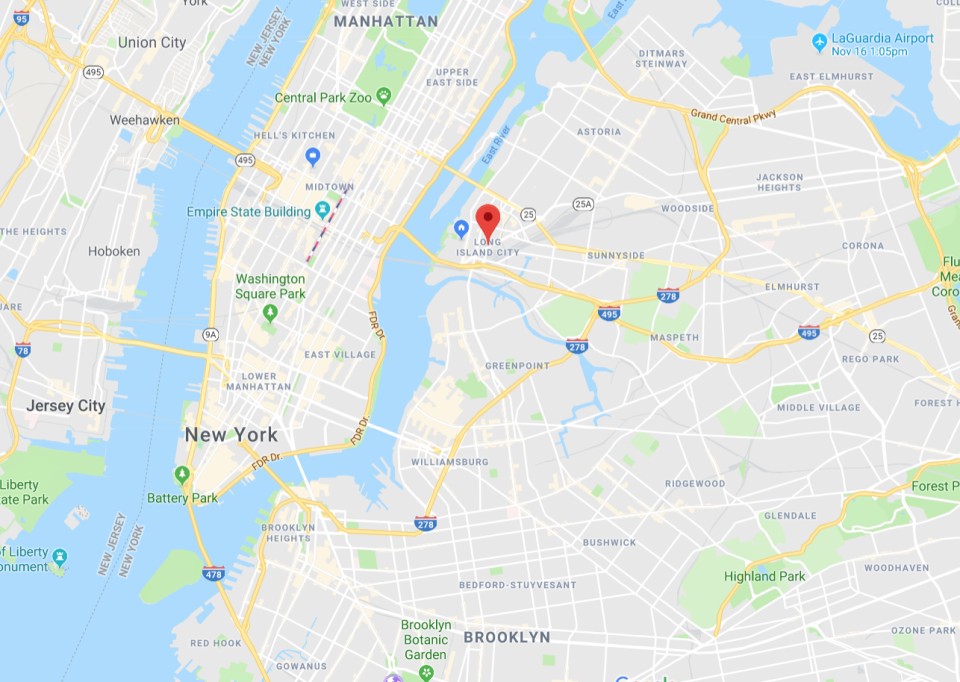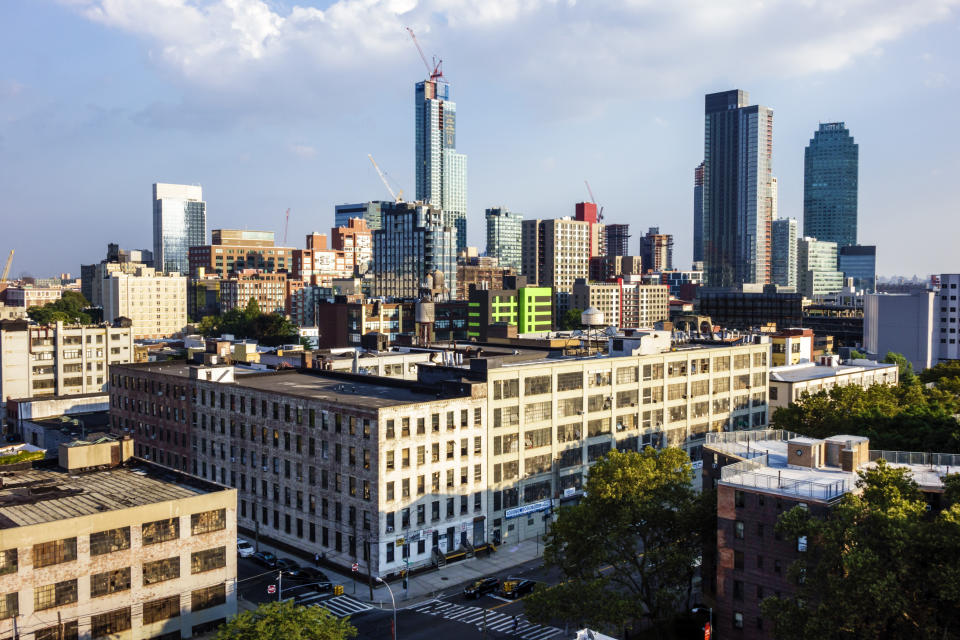'Major operations were centered here': Why Long Island City makes sense for Amazon
This story was originally published on Nov. 11 and was updated on Nov. 13 after Amazon finalized its decision.
Long Island City is the center of attention now that it will be one of two locations Amazon will pick for its second headquarters, dubbed HQ2. Amazon (AMZN) choice of Long Island City makes a lot of sense in many ways.
A New York City neighborhood in the borough of Queens, Long Island City is mostly known for its giant red 44-foot-tall landmark PepsiCo sign. The sign comes from the giant PepsiCo bottling plant that used to call the Long Island City waterfront home until the beverage company closed the plant in 1999, after more than 50 years of operation.
‘Now everyone is excited about Long Island City’
Long Island City has come a long way from its gritty industrial past. It’s now a thriving mixed-use neighborhood with a population of nearly 95,000 and more than 13 million square feet of office and industrial space either developed or under construction. It is also a major transit hub — eight subway lines and two ferry landings provide easy access to Long Island City to a pool of more than 1.5 million workers from other New York City neighborhoods and New Jersey. On top of that, there’s the neighborhood’s proximity to two airports, LaGuardia and JFK.
It’s also close to Cornel Tech’s campus on Roosevelt Island, certainly a source of talent for Amazon. New York officials highlighted those aspects and more in the city’s pitchbook to Amazon.

Long Island City is a logical way for the Seattle-based Amazon to establish an East Coast headquarters. Some said the city’s announcement last week to invest $180 million in the neighborhood’s infrastructure to help sustain growth was a hint that the New York neighborhood would win the HQ2 bid.
The region already has its share of well-established companies and startups, some of which are in tech. Ride-sharing rivals Uber and Lyft, which recently opened offices in Long Island City, are neighbors at the Falchi Building, a five-story office building that was a former warehouse for famed New York City department store Gimbels. Last year, the Netherlands-based cable provider Altice moved its USA headquarters to the neighborhood from Bethpage, Long Island. And JetBlue Airways has been based in Long Island City since 2012.

“Now everyone is excited about Long Island City. We are one of the fastest-growing neighborhoods in the country, most productive in New York state,” said Elizabeth Lusskin, president of the Long Island City Partnership, the neighborhood’s economic development group, who has no knowledge of Amazon HQ2 talks with New York. “We are getting great companies.”
There are about 2,250 light industrial and manufacturing businesses in Long Island City, according to Lusskin. These companies include popular New York City food makers like Doughnut Plant, Tom Cat Bakery, and Amy’s Bread, which have factories in the neighborhood, as well as a half a dozen small breweries like Rockaway Brewing Co. and Big Alice Brewing. Even major retailers like Ralph Lauren and J.Crew have moved some of their operations to the area. Earlier this year, cosmetics company Estée Lauder relocated its IT employees to Long Island City.
‘Major operations were centered here’

The western Queens neighborhood which is bordered by the East River was home to a number of manufacturers, not just soda bottling factories, like Fisher Electronics and Chiclets Gum. Plaxall, a third-generation family-owned plastic manufacturer, established its presence in Long Island City more than 70 years ago. The company, which still calls the area home, was at one time Pepsi’s landlord and owns a huge swath of real estate in Long Island City, primarily along the waterfront. Plaxall is now developing a 700-foot tall residential project in the area.
“Long Island City has a strong rich history of light manufacturing,” said Frank Raffaele, CEO of COFFEED, a coffee chain which opened its first of now four locations in the neighborhood about 10 years ago. “Major operations were centered here.”
![Marble cutting yard in Long Island City in 1907. [Credit: New York Public Library/Wikimedia Commons]](https://s.yimg.com/ny/api/res/1.2/vLl0zTd42ZkLl_O8jMlm5g--/YXBwaWQ9aGlnaGxhbmRlcjt3PTk2MDtoPTc4NQ--/https://media.zenfs.com/en/homerun/feed_manager_auto_publish_494/b33d31c78a4b6baa8d017ae3f176e407)
A number of car manufacturers used to create parts and finish cars in the region. The Standard Motor Products Building, which was built in 1919, is now a 330,000-square-foot office building that houses popular muppet characters from the Jim Henson Company, a commercial urban rooftop farm Brooklyn Grange as well as a COFFEED location at the base.
Citigroup and MetLife were the first major financial institutions to set up shop in Long Island City. The former moved some of its back office operations to the area about 30 years ago. Citi’s lease is up in 2020 and it’s unclear which company will take over its more than 1 million-square-foot office space.
Amazon could be a possible taker if the internet giant isn’t looking to establish a centralized campus. In 2001, MetLife relocated some of its employees to Long Island City, but returned to midtown Manhattan five years later (and now maintains a smaller presence in Long Island City).
Not a ‘bedroom community’
It’s taken longer than expected for commercial development to pick up or rather catch up to residential development in the area. Residential development has been booming in Long Island City, which boasts over 16,780 units since 2006, mostly rentals, and by 2020 more than 11,800 units are expected to be completed, according to the LIC Partnership. There’s even a lot of open public space, with 11 acres now open along the waterfront.
![Hunter’s Point South Park in Long Island City. [Credit: nycgovparks.org]](https://s.yimg.com/ny/api/res/1.2/cqafbEj9JozPaoZyZOdImg--/YXBwaWQ9aGlnaGxhbmRlcjt3PTk2MDtoPTY0MA--/https://media.zenfs.com/en/homerun/feed_manager_auto_publish_494/f1452cd864a8f0d585eb9468189bc69c)
“Most new construction has been residential and hotel, but it wasn’t supposed to be a bedroom community, it was supposed to be a vibrant mixed-use community that could accommodate an educated workforce,” said David Brause, president of Brause Realty, a prominent residential and commercial landlord in the neighborhood. One of Brause’s office buildings, where JetBlue is headquartered, formerly housed a manufacturer of Brewster and Rolls Royce cars, horse-drawn carriages, and World War II airplanes.
Aside from Amazon HQ2, other commercial development is in the pipeline and major real estate investment trusts and firms are pouring money into the area. Vornado Realty Trust (VNO) completed a purchase of 437,000-square-foot office building in 2015. A fund by private equity shop Carlyle Group agreed to pay $284 million for a luxury rental in the building earlier this year and Normandy Real Estate Partners, along with Keystone Equities and GE Capital, spent $39 million on an industrial building to convert it into office. Meanwhile, Tishman Speyer is constructing The Jacz, a 1.1 million-square-foot office complex that is already 70% pre-leased to tech and fashion companies including Bloomingdale’s and co-working space provider WeWork.
“Amazon would open the floodgates for commercial development,” said Raffaele, before the headquarters was officially announced. “It would be revolutionary.”
Amanda Fung is an editor at Yahoo Finance.
Related stories:



